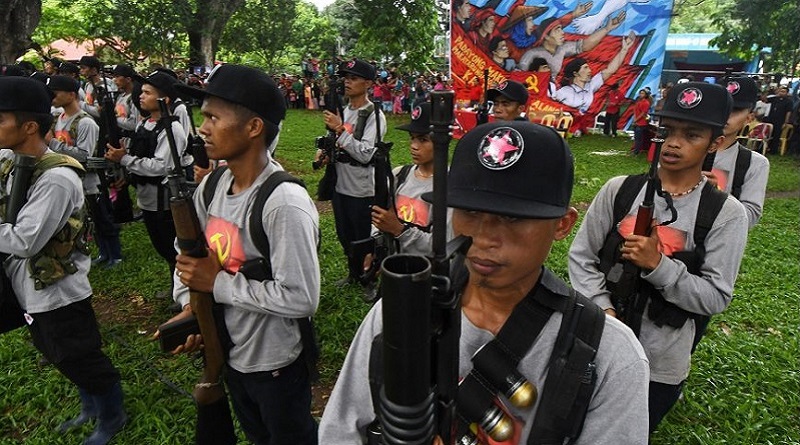Young cadres take on the reins of revolution
MANANOM-BAGO, Medina, Misamis Oriental (MindaNews/27 December) — Carrying an M16 rifle and a bandolier of spare ammunition, Jaito, a 22-year-old New People’s Army fighter, walked toward the back of a makeshift stage where a couple of journalists were waiting for him.
“I heard you need somebody to interview,” he told reporters who went to this village to cover the 48th anniversary celebration of the Communist Party of the Philippines on Monday.
Jaito is among the new generation of NPA fighters of the CPP, which has espoused the primacy of armed struggle against “feudalism, imperialism and bureaucrat capitalism” since its founding 48 years ago.
After an exchange of pleasantries, Jaito narrated how he left a life of poverty and unemployment as a son of a poor farmer to join one of the world’s longest-running communist rebellions.
“My family was poor and my life was going nowhere, “ he said.
So when one of his friends asked him whether he would join the NPA, Jaito said he readily agreed.
A year later, he became one of the trusted cadres in charge of a platoon of twenty men and women, mostly in their 20s and 30s, roaming the rugged mountains of Misamis Oriental.
“The NPA provided me with everything and eventually my platoon became my immediate family,” Jaito, who has not seen his parents since becoming a guerrilla, said.
“I am already prepared for any possible outcome of my new life. I have even accepted that I could die here,” he said.
Wind of change
With age catching up on most of its early cadres, many of whom have lain low, the rebel army has to draw in youngsters like Jaito to fill its ranks.
The CPP-NPA, known for its rigid code of discipline, appears to have adjusted to the wind of change.
It used to be that cadres were discouraged from singing pop songs, as these were considered part of “decadent culture”. Now, however, the movement has embraced pop culture to attract the young to its ranks.
At the party’s anniversary celebration here, cadres like Jaito danced to the tune of pop songs to entertain their guests who came from all over Northern Mindanao.
Much sought after by their guests were red star pins, T-shirts and of course, selfies with the smiling guerrillas armed with their M16 and AK 47 rifles.
“This is now their revolution. The old one is gone. The old cadres are dying, they will be replacing us,” National Democratic Front consultant Alfredo “Ka Paris” Mapano said.
Mapano said the space created be the current peace talks between the NDF and the Duterte administration has attracted many young people to come and experience the life of a guerrilla.
He said the arrival of youngsters from the cities and farms to the guerrilla zones happened in “moderate trickles” in the past six months.
“They came here to see what the life of a guerrilla is. What they saw is a life of service to the people and they like it,” he said pointing to a group of Kabataang Makabayan members performing for the crowd.
Mapano said the five most active guerrilla fronts of the NPA are located in Mindanao and half of its guerrilla forces are based in the island.
He said of 20 fighters that comprise an NPA platoon, most are in their 20s and only two or three are in their 30s.
He said the NPA cadres can become “a green army” once a final peace agreement is signed between the NDF and the government.
He said these cadres will perform their new role by monitoring compliance with environmental laws by mining companies and plantations in the countryside.
He said the NPA could easily find new relevance in a post-peace agreement setting.
The CPP was founded on December 26, 1968 by remnants of the Partido Komunista ng Pilipinas and its armed wing, the Hukbong Magpapalaya ng Bayan.
Three months after, on March 29, 1969, the CPP formed the NPA as its military arm.
Source: (Froilan Gallardo/MindaNews)

